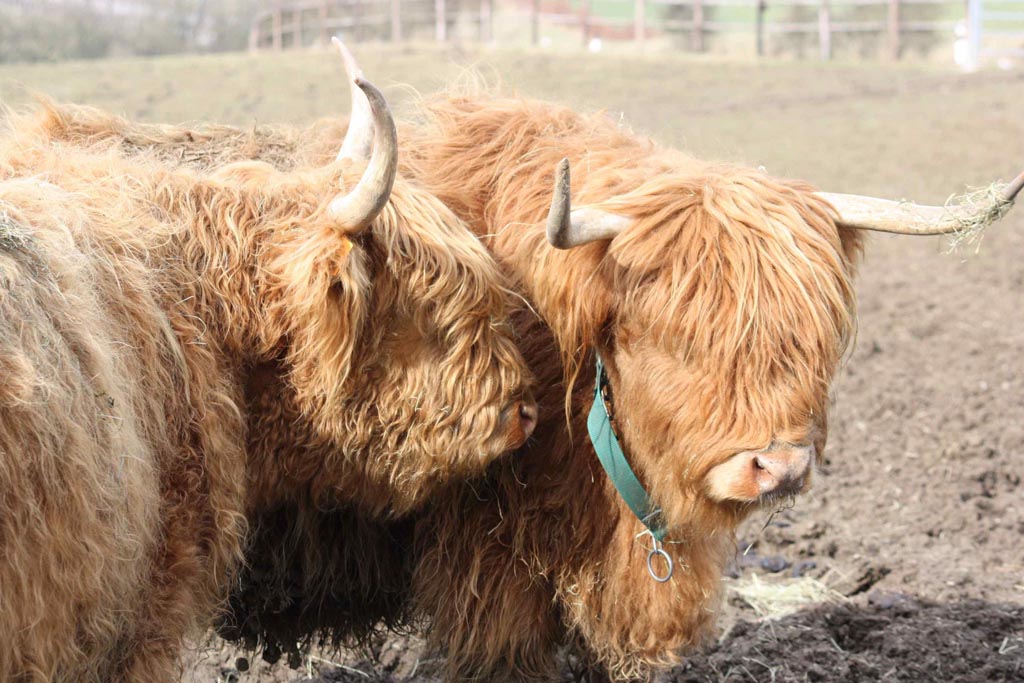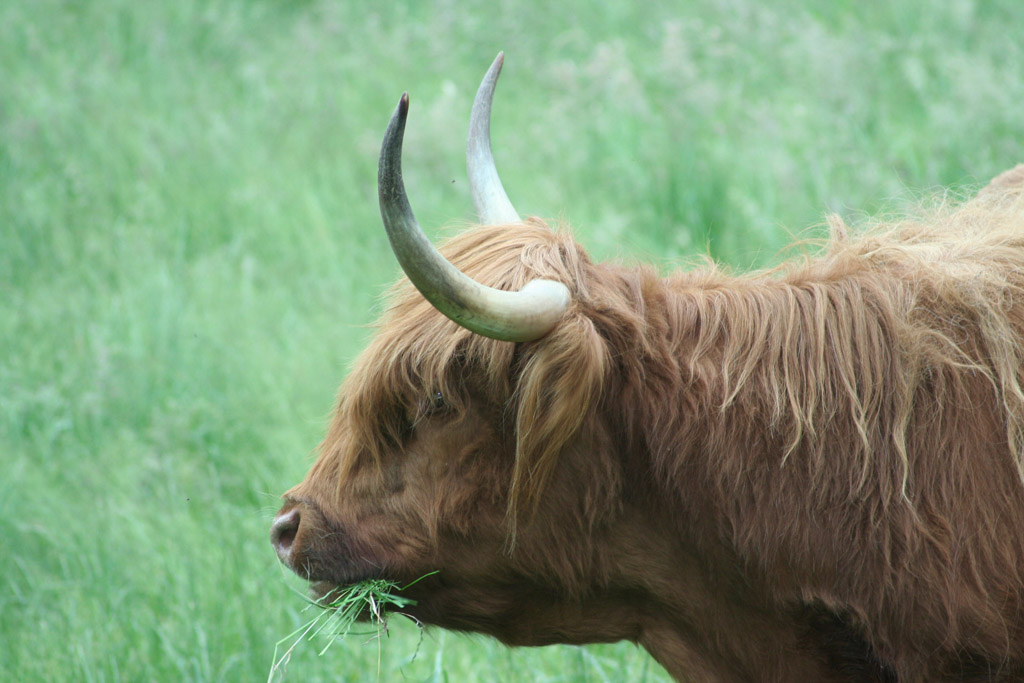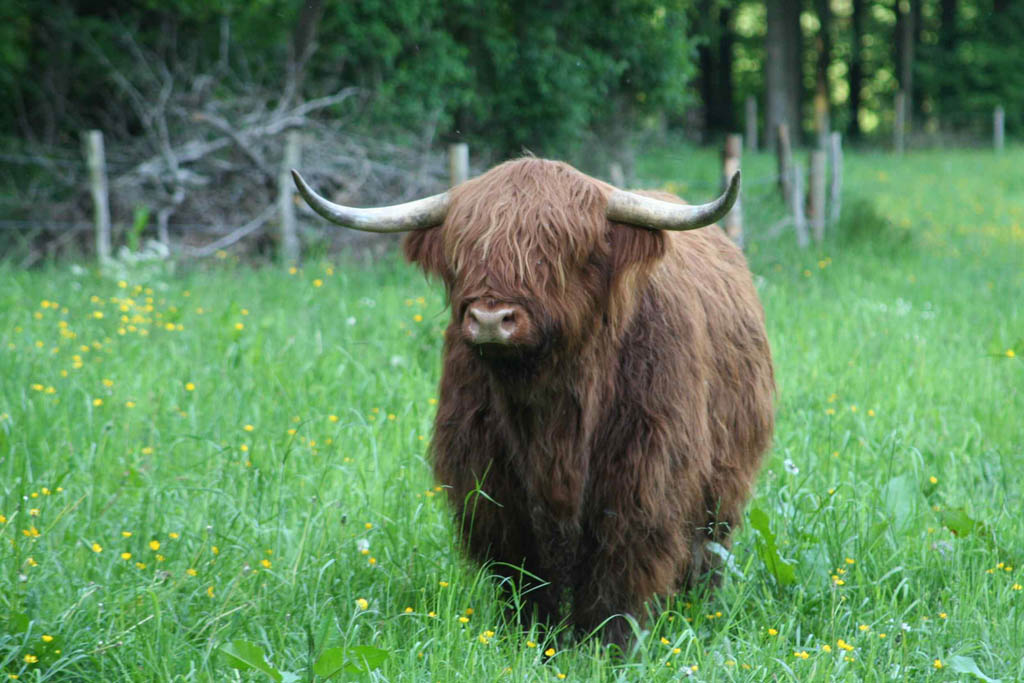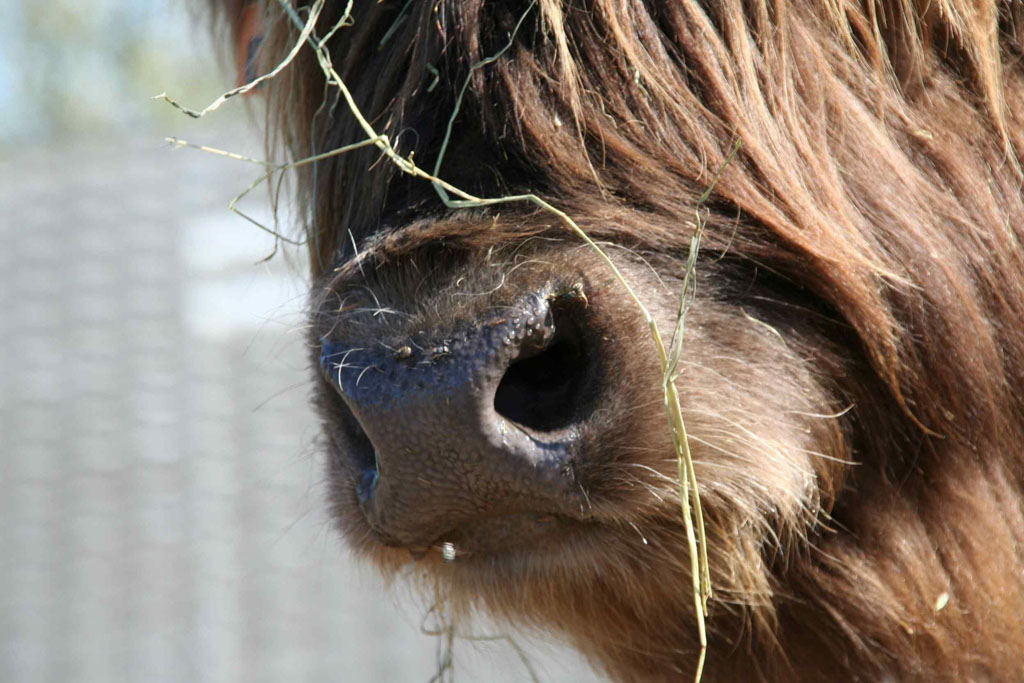Of all the representatives of our bovine breeds, the Highlander has the grandest and most picturesque head, it is, indeed, to his head that he owes his great favour among artists. As a rule, it is most proportionate to the body of the animal, and is broad between the eyes, while short from the eyes to the point of the muzzle. The forelock between the eyes should be wide, long and bushy, and any nakedness or bareness there is certain to detract from the appearance of the animal. Some would almost have the hair so wide there as to obscure the eyes, but this in many cases would be allowing one good point to over-shadow another.
The eyes should be bright and full, and denoting, when excited, high courage. When viewed sideways, there should be a proportionate breadth of the jawbones readily observable, when compared with the width of the head in front, whilst the muzzle should, when looked at from a similar point, be short, though very broad in front, and with the nostrils fully distended, and indicating breeding in every way. One of the most noteworthy features in a Highlander, is of course, the horns. The bulls horns should be strong, and come level out of the head, slightly inclining forwards, and also slightly rising towards the points.
Some, however, do not care for this rise, though any drooping is considered to be a very bad fault when between the crown and the commencement of the curve, as this is generaly accompanied by a low weak back. Some, too, are of opinion that the masculine appearance is slightly detraced from when the horns rise directly from the crown. This, however, can only readily be detected and commented upon when particular animals are brought before experienced judges, as within a show ring.
As regards the horns of the cow, there prevail two opinions. As a rule, they come squarer out from the head than in the male, rise sooner, and are somewhat longer, though they preserve their substance and a rich reddish appearance to the very tips. The lack of the appearance of substance or “sappiness” about the horns of the male would be very much against the animal in the show-yard. The other taste is that for a female, the horns of which come more level from the head, with a peculiar back set curve, and very wide sweep. A large number of enthusiastic breeders seem to prefer, by comparison, the latter, which gives possibly the more graceful appearance. In all cases, however, the horns of a Highlander, when well set, gives the animal a stamp of nobility which causes it to attract the attention of any stranger who might pass heedlessly by animals of other breeds as merely cows, bulls or oxen.





